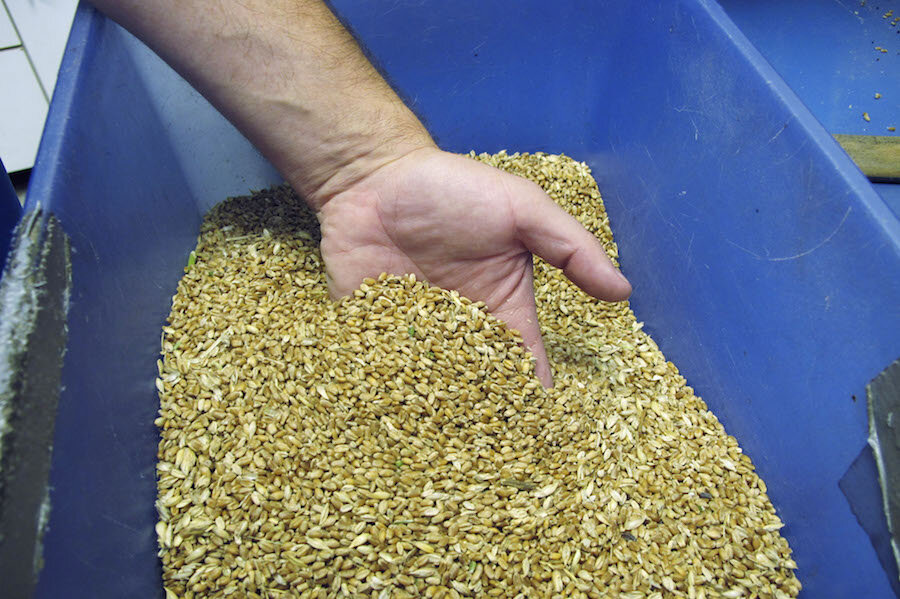Educating their grandchildren one harvest at a time
Loading...
Alice and Paul Barasa live in Samoya, Kenya, a flatlands area surrounded by rolling hills roughly 250 miles northwest of Nairobi. Like 75 percent of the world’s population living in poverty, Alice and Paul are smallholder farmers. They own one and a half acres of land, which they plant each March in the hopes of harvesting well each August. For as long as they can remember, they have relied on their small plot of land to support their ever-growing family.
The Barasa house is always full of people. Mornings are a flurry of activity, with hands reaching every which way, trying to ensure each and every child gets fed, dressed, and onto whatever activity is meant to come next.
Seven of Alice and Paul’s eight children are married with children of their own, many of whom have returned to live with their grandparents. Currently, the four-room mud house acts as home to the couple, their youngest daughter Catherine, and 14 of their grandchildren.
On a typical day, the older children head off to school, while the younger ones play games in the grass near the Barasas’ home. Today, however, the schools are closed for a mid-year break, so everyone joins Alice in the farm for their annual harvest. As the children disappear behind a wall of dried maize stalks often twice their height, giggles drift out into the sunny morning.
Alice says that although she loves her family, the current headcount means many mouths to feed. She figures that five years ago, supporting a household of this size would not have been possible.
Despite farming their entire lives, Alice and Paul never seemed to be able to produce enough to feed their family. After months and months of hard labor, they would often only harvest enough food to last for part of the year. What little supplemental income they had from other activities was spent on additional food. Even public school fees were out of reach.
Catherine, their 19-year-old daughter, remembers being sent home from school day after day because her parents couldn’t pay the fees.
“I would feel very bad because I would leave and the other students in my class would continue with their studies. When I could finally return, I would feel behind in the lessons, and it was very hard to catch up with the other students,” Catherine says.
In 2010, Alice and Paul enrolled to receive farming supplies and trainings from One Acre Fund. Founded in 2006, One Acre Fund supplies smallholder farmers with the financing and training they need to grow their way out of hunger and poverty. Offering a complete bundle of services offered on credit, the organization distributes quality farm inputs to the remote areas where farmers live, trains them on agriculture techniques, and educates them on how to minimize post-harvest losses and maximize market prices.
That year stands out in Catherine’s mind as a turning point in her childhood.
“It was the year I moved from primary school to secondary school. There had never been any food in the house before, but that year we had enough to eat,” she says. “Before, I would be chased from school often because of school fees, but since my parents joined One Acre Fund, I have never been asked to leave.”
That year, Alice and Paul harvested twice as much maize as their best harvest in previous years. This meant they could not only afford to pay the school fees, but that they could feed their family throughout the year without having to buy any additional food.
“Before we joined One Acre Fund, our food would run out by November that same year. Now our harvests last up to July the following year,” Paul says.
Improved harvests have allowed Paul and Alice to plan for the future. For now, they are focused on supporting their grandchildren and educating them through the Kenyan public school system.
“We want our children and grandchildren to attend school. They have the right to education. We did not reach high school because our parents did not have the money to send us,” says Paul.
As for Catherine, her family’s newfound stability has inspired her to make plans of her own. “I want to be a nurse because it's a good profession. I want to help people," she says.
As she shucks the dried husks from her large maize cobs, Alice says she believes their harvest this year will be their best to-date. She thinks they may have grown enough maize and beans to feed their family, pay school fees and possibly even buy a cow. She says being able to invest in livestock would be the next step to guaranteeing an even more stable source of income for her family, and to securing an education for all her grandchildren.
This article first appeared on Food Tank.





